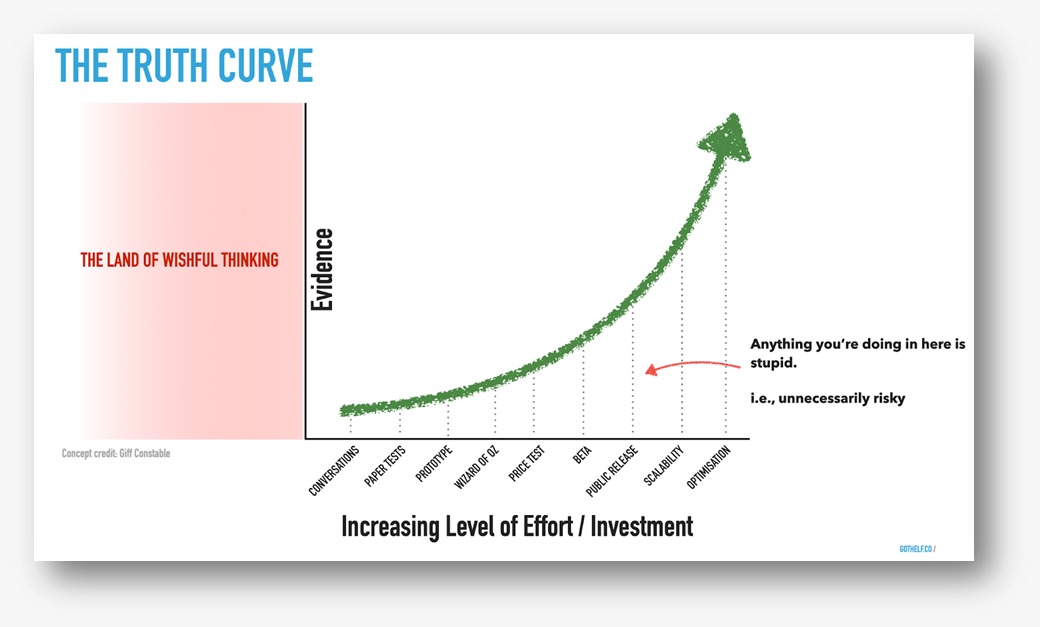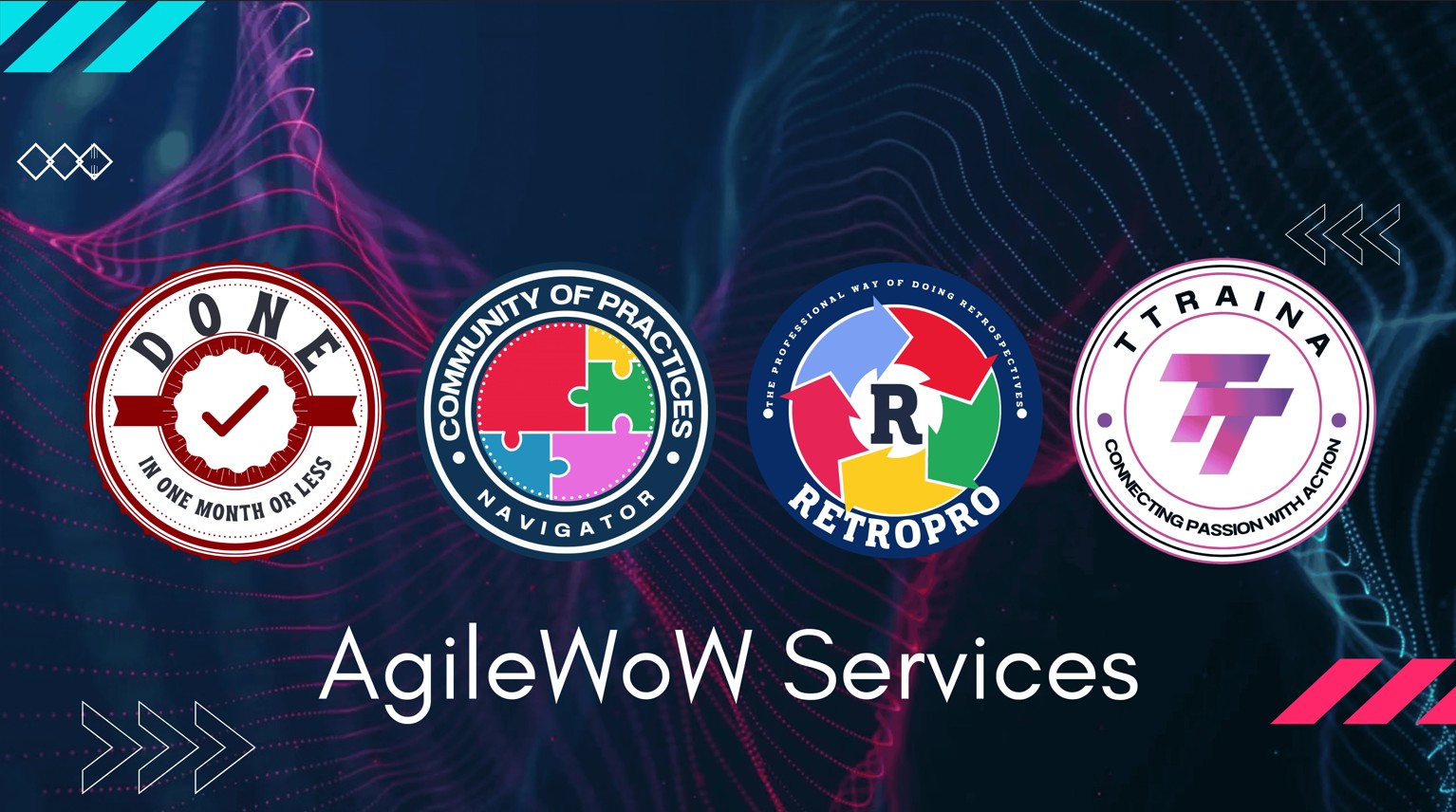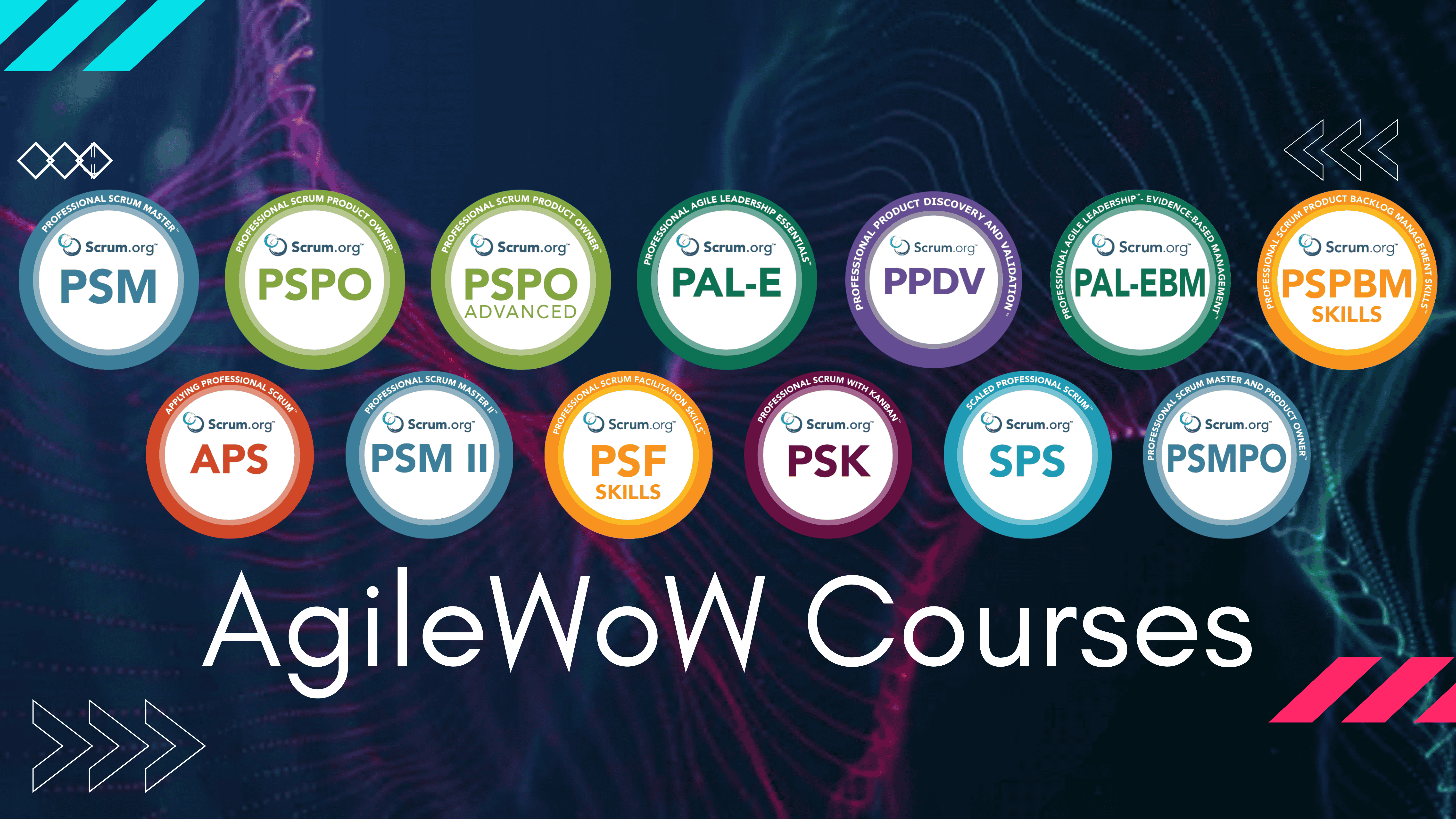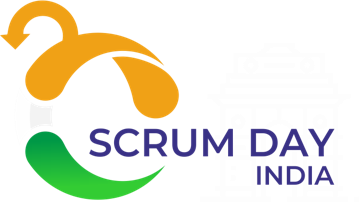The Truth Curve: Making Smarter Product Decisions
In today’s fast-paced product environment, jumping into product development without validation is like flying blindfolded—you may crash before even taking off.
To avoid such pitfalls, product managers need a systematic approach for validating assumptions efficiently. The Truth Curve is a strategic framework that guides you in validating product ideas progressively, ensuring you make well-informed decisions with minimal resource investment.
Let’s explore in detail what the Truth Curve is, why it matters, and how to apply it effectively.
Understanding The Truth Curve
The Truth Curve is a powerful framework introduced by Giff Constable, author of *Talking to Humans*. It represents the relationship between the level of effort invested in validating a hypothesis and the resulting confidence in the insights gained from that effort.

Image source: Jeffgothelf.com
In other words, the Truth Curve helps you determine how much you should invest in testing your ideas—starting small, then increasing investment only as your confidence grows.
The Truth Curve is represented along two axes:
- Effort or Investment (X-Axis): The resources—time, cost, and human effort—that you spend validating your product assumptions.
- Confidence or Evidence (Y-Axis): The degree of certainty you achieve from validation activities.
The principle behind the Truth Curve is simple yet powerful: Start with low-cost experiments and gradually invest more resources as your confidence in the hypothesis grows.
The Practical Application of the Truth Curve
To apply the Truth Curve effectively, you follow a structured approach:
1. Low-Effort Experiments
Begin your validation journey with minimal investment techniques that yield quick insights. Examples include:
- Customer Interviews: Talking directly with potential users about their needs, problems, and desires. For instance, before launching Airbnb, founders Brian Chesky and Joe Gebbia personally interacted with early users to deeply understand their accommodation preferences.
- Paper Prototyping: Sketching simple interfaces on paper to test product concepts cheaply. Dropbox famously validated demand using a simple explainer video demonstrating their idea before building the entire infrastructure.
2. Moderate-Effort Experiments
If initial experiments provide encouraging results, escalate your investment to gather stronger evidence. Examples include:
- Landing Page Tests: Creating a simple landing page to gauge real-world interest through email sign-ups or clicks. Buffer successfully used a landing page to test initial interest before building their social media scheduling tool.
- Fake Door Testing: Adding a feature option that doesn't yet exist to measure genuine customer interest based on clicks or attempts to use it. Spotify regularly employs this method to test demand for new premium features.
3. High-Effort Experiments
When you have solid evidence indicating potential success, move towards more substantial validations, such as:
- Wizard of Oz MVP: Users interact with a seemingly automated product, but behind-the-scenes humans manually deliver the functionality. Zappos famously tested online shoe retailing by manually fulfilling customer orders, validating the model without heavy inventory investment.
- Concierge MVP: Offering highly personalized manual services to deeply understand customer requirements. Food on the Table initially provided personalized meal plans through manual processes before scaling their automated platform.
- Technical Prototypes & Beta Testing: Building functional prototypes for users to try out and provide direct feedback, allowing real-world interaction and deeper validation.
Why the Truth Curve Matters in Product Management
- Reducing Risk: The Truth Curve prevents premature investments in unvalidated ideas, saving resources and minimizing potential losses. By starting small, you confirm product-market fit before committing extensive resources.
- Efficient Resource Allocation: You invest only when you have evidence to justify higher costs. This incremental validation ensures your resources—time, money, and talent—are spent efficiently.
- Informed Decision Making: The Truth Curve provides a clear, evidence-based approach to making product decisions. It replaces guesswork and gut feelings with structured experimentation and validation.
Dropbox and the Truth Curve
Before Dropbox built their highly successful file-sharing solution, founder Drew Houston tested demand through a simple explainer video that described the envisioned product. This low-effort validation step quickly provided evidence that customers were interested, allowing the company to confidently invest in full product development. Today, Dropbox is valued at billions—thanks to its early commitment to validation.
Leveraging AI and Tools Along the Truth Curve
Today's product managers can leverage modern AI-powered tools to streamline validation efforts across each stage of the Truth Curve:
Early Stage (Low Effort):
- AI-Powered Interviews & Surveys: Tools like Qualtrics, SurveyMonkey, and Typeform provide quick and insightful data from customer interactions.
- Sentiment Analysis: Platforms like MonkeyLearn or Lexalytics analyze user feedback instantly.
Middle Stage (Moderate Effort):
- Landing Page Optimization & Testing: AI-driven tools like Unbounce or Instapage efficiently test messaging and user demand.
- Feature Flags & Fake Door Tests: Platforms such as Optimizely and LaunchDarkly test features seamlessly.
Late Stage (High Effort):
- Rapid Prototyping with AI: Figma AI and Uizard quickly generate realistic prototypes.
- Predictive Analytics: Machine learning solutions like IBM Watson or Google Vertex AI anticipate user behaviors, guiding strategic decisions.
The Truth Curve offers a strategic and disciplined approach to product discovery and validation. By starting with minimal investments and scaling up validation efforts progressively as confidence builds, product managers can significantly improve their likelihood of success, reduce waste, and make smarter, data-driven decisions.
Adopting the Truth Curve not only helps you validate product ideas effectively, but it fundamentally transforms your team's approach—shifting from assumptions and guesswork to confident, evidence-based product development.
Recommended References & Further Reading:
- Constable, G. (2014). *Talking to Humans*
- Gothelf, J. (2022). "The Truth Curve: Validate Your Ideas Faster"
Ready to Transform Your Product Decisions?
Ready to master product discovery and validation using tools like the Truth Curve?
Join AgileWoW’s Professional Product Discovery & Validation (PPDV) training workshop and empower your team to build products users genuinely want.





